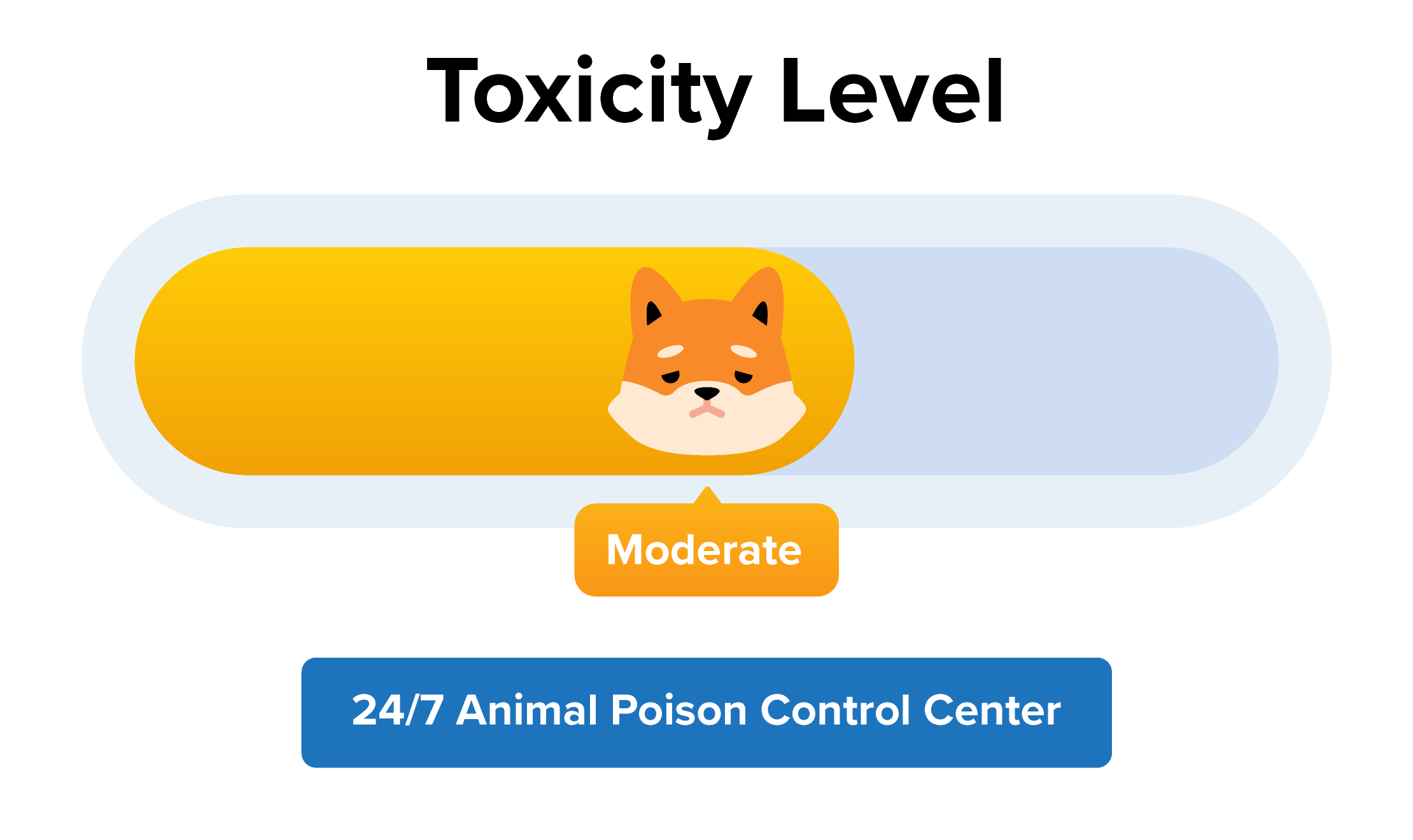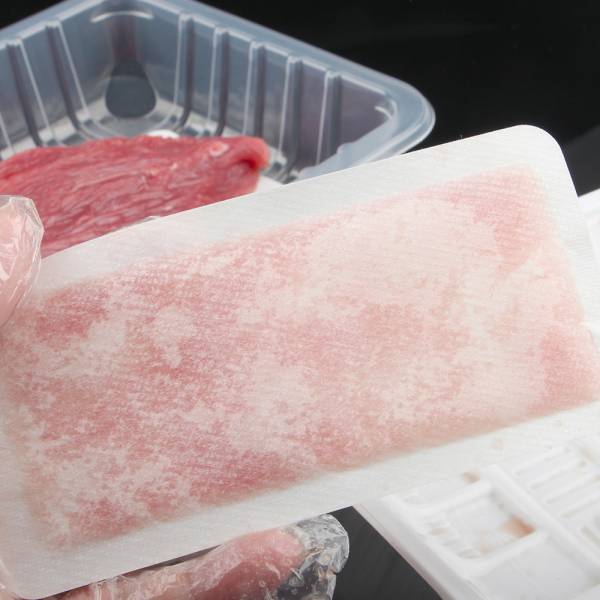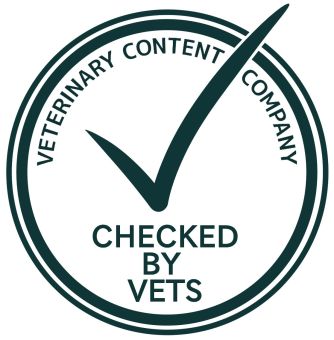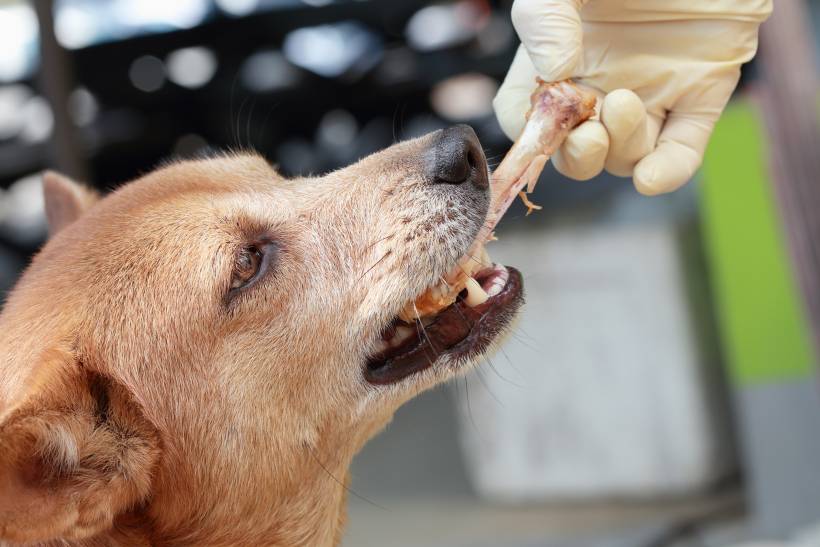Connect with a verified veterinarian in minutes. Licensed vets are available 24/7 to answer your questions. No need to worry about your furry family member.
When you buy meat at the grocery store, there’s usually some type of pad under the meat. Some of these pads are thicker, while others are more like a sheet of paper. Have you ever wondered what these are?
Dogs don’t wonder about these pads at all. In fact, if they have the chance, many dogs will dig in the trash to find this soaking, bloody treasure as it smells of meat! Then they may lick or even eat this pad. Can the pad make your dog sick?
What are Absorbent Meat Pads?
These pads are made of absorbent materials and are placed in the meat tray to soak up fluids that leak out of meat. It keeps the fluids from pooling in the package, which would look pretty gross. Who would want to buy an oozing package of meat? But the pads do even more than that.
Not only do the pads absorb the fluid, but they also keep these fluids from dripping all over kitchen surfaces. This keeps potentially harmful bacteria off your counters and other areas. Absorbent meat pads also work to keep the meat fresh by keeping it from sitting in its own juices. Plus, the pads also keep bacteria from growing in the meat.
These pads are made of paper that have a plastic liner that has either a silica gel or cellulose. These are coated in a non-toxic plastic wrapping that has small holes throughout. Liquid from the meat goes through the holes and is held in place by the silica gel or cellulose.
All materials in the pad have been approved by the FDA. In fact, these pads and the rest of the meat packaging undergo strenuous testing to ensure they’re safe.
But what about if your dog happens to eat one of the pads?
Absorbent Pads Can Be Dangerous for Dogs
While nothing in the absorbent meat pads is toxic, the pads can still cause a problem if swallowed. In some dogs, the pad may pass right through the dog’s digestive tract and not cause a problem. However, in other dogs, the pad can be stuck in the intestines and create a blockage. This is called an intestinal blockage, and is a very dangerous medical condition in dogs.
Any material that isn’t broken down by the digestive tract can cause a blockage in the intestines. It may be too big to pass through the dog’s intestines (especially in small dogs) or the pad may become swollen with fluid which could block intestines in any size dog. This is how they can lead to a blockage. If your dog has eaten a meat pad in the last 1-3 hours, contact your vet immediately as they may decide to make him sick to bring up the meat pad.

Review symptoms, medications & behavior to keep your pets healthy with a Vet Online in just minutes.
Ask a Vet Live NowSymptoms of an Intestinal Blockage in Dogs
You may notice these symptoms if your dog has developed an intestinal blockage:
- Vomiting
- Diarrhea
- Constipation (or lack of poops)
- Lack of appetite
- Painful, swollen abdomen
- Lethargy
- Restlessness
- Weakness
- Dehydration
- Nausea
If your dog is showing any of these symptoms, then call the vet immediately. This is a life-threatening medical emergency and may need surgery. Your dog needs help now.
How is Intestinal Blockage in Dogs Treated?
Before your canine companion can be treated, the vet will first conduct a physical examination. They may pay closer attention to your dog’s abdomen. The vet may also do bloodwork to see if the blockage is affecting other areas of your dog’s health.
Next, the vet may perform X-rays (or other imaging methods) to find where the absorbent pad is lodged. Another test the vet may use is an endoscopy, where a small tube with a small camera is put into your dog’s throat and then into his stomach. Dogs are sedated for this procedure.
Once the vet has located the blockage in your dog’s digestive tract, he may use a surgical or non-surgical method to remove the absorbent meat pad. The non-surgical method is used if the vet can reach the pad with the endoscope. If not, then they may need to perform surgery.
During the surgery, the vet will remove the blockage and repair any damage it has caused to your dog’s digestive tract. Your fur baby will be given anesthesia, so he won’t feel any pain during the surgery.
How to Care for Your Dog After Surgery
After surgery, the vet will provide you with instructions on how to care for your dog. It is necessary to monitor your fur baby for potential side effects and complications. Your fur baby will also need to keep his activity level low as he heals.
Be sure to follow your vet’s post-surgical care instructions and call them if you have any questions.
Connect with a verified veterinarian in minutes. Licensed vets are available 24/7 to answer your questions. No need to worry about your furry family member.

Aisling O'Keeffe, MVB CertSAM ISFMCertAdvFB
This article has been reviewed and approved by an independent Veterinarian: Aisling qualified as a vet 7 years ago from University College Dublin. She has worked in a mixture of UK small animal hospitals along with Irish practices. She worked for 3 years in a feline-only hospital where she further developed her feline medicine and surgery skills. She currently lives and works in a small animal hospital in Cork, Ireland.
Review symptoms, medications & behavior to keep your pets healthy with a Vet Online in just minutes.
Ask a Vet Live Now






